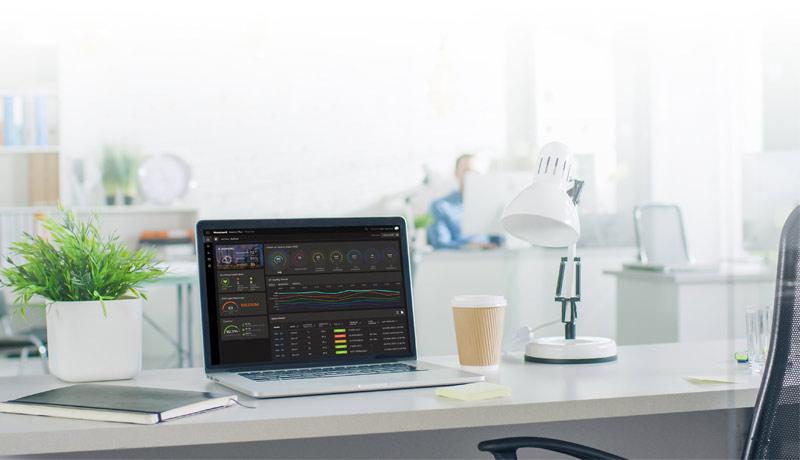
Honeywell announced an integrated solutions portfolio to help building owners in the Middle East improve the health of their building environments, operate more cleanly and safely, comply with social distancing policies, and help reassure occupants that it is safe to return to the workplace. By integrating air quality, safety, and security technologies along with advanced analytics, Honeywell’s Healthy Buildings solutions are designed to help building owners minimize potential risks of contamination and create business continuity by monitoring both the building environment and building occupants’ behaviors.
Honeywell’s new solutions provide building owners with more control over critical health, safety, and security factors to encourage sustained compliance with changing building standards, safety guidelines, government-issued regulations, and a company’s risk management policies. These innovative solutions also provide transparency into a building’s health status to its occupants.

“We’re all facing a new normal – including how buildings are managed. We’re working with entities in the region to support well-being as building owners, operators and occupiers return to work, consider travel, visit shopping malls or healthcare facilities,” said George Bou Mitri, vice president, and general manager, Honeywell Building Technologies, Middle East, Turkey, and Africa. “Honeywell has developed outcome-based solutions that allow building owners in the region to transparently address how they limit exposure to and the spread of viruses while supporting their business continuity needs. We’re giving them the data they need to confidently reassure their employees to accelerate their business operations.”
Honeywell’s Healthy Buildings solutions are part of a comprehensive effort among Honeywell’s businesses to come together to quickly develop solutions that are helping important sectors of the global economy recover. Honeywell’s Healthy Buildings solutions provide a holistic view of a building’s health based on key factors such as indoor air quality, occupant flow, personal protection equipment (PPE) analytics, thermal screening, social distancing, anti-bacterial wiring devices, and sanitation efficacy.
Honeywell’s Healthy Buildings solutions feature two packages – one focused on indoor air quality and another on safety and security.
The Honeywell Healthy Buildings Air Quality package monitors manage and controls key parameters to create a healthier built environment while still managing energy efficiency. The Air Quality package can:
The Honeywell Healthy Buildings Safety & Security package features hardware and software that can help building owners minimize risk by monitoring, detecting, and responding to potential issues using integrated security tools. The Safety & Security package can:
In addition, Honeywell’s novel #HealthyBuildings Score analytics provides real-time alerts to building owners and operators so they can quickly address non-compliance issues or deal with infection-related incidents. The #HealthyBuildings Score comprises key building health metrics that can be provided to occupants in a simplified view on a dashboard. Healthy Buildings outcomes are powered by Honeywell Forge and monitored via the #HealthyBuildings score.

The Honeywell Healthy Buildings solutions can support the needs of any building and features specific solutions for premium commercial buildings, airports, hospitality, banking, stadium, healthcare, and education sectors. The fully integrated air quality, health, safety, and security controls are backed by expert services and remote monitoring support. Customers can also leverage their existing infrastructure, including third-party solutions, to affordably enhance air quality and security outcomes.
The company has also developed an Environment Control System Health check that allows airlines to quickly use aircraft data and advanced analytics to monitor for and improve cabin air quality. Additionally, it’s applying the Honeywell Forge platform to help customers operate their buildings, factories, warehouses, supply chains, and aircraft more efficiently and in ways that promote the health and safety of occupants, workers, and passengers.